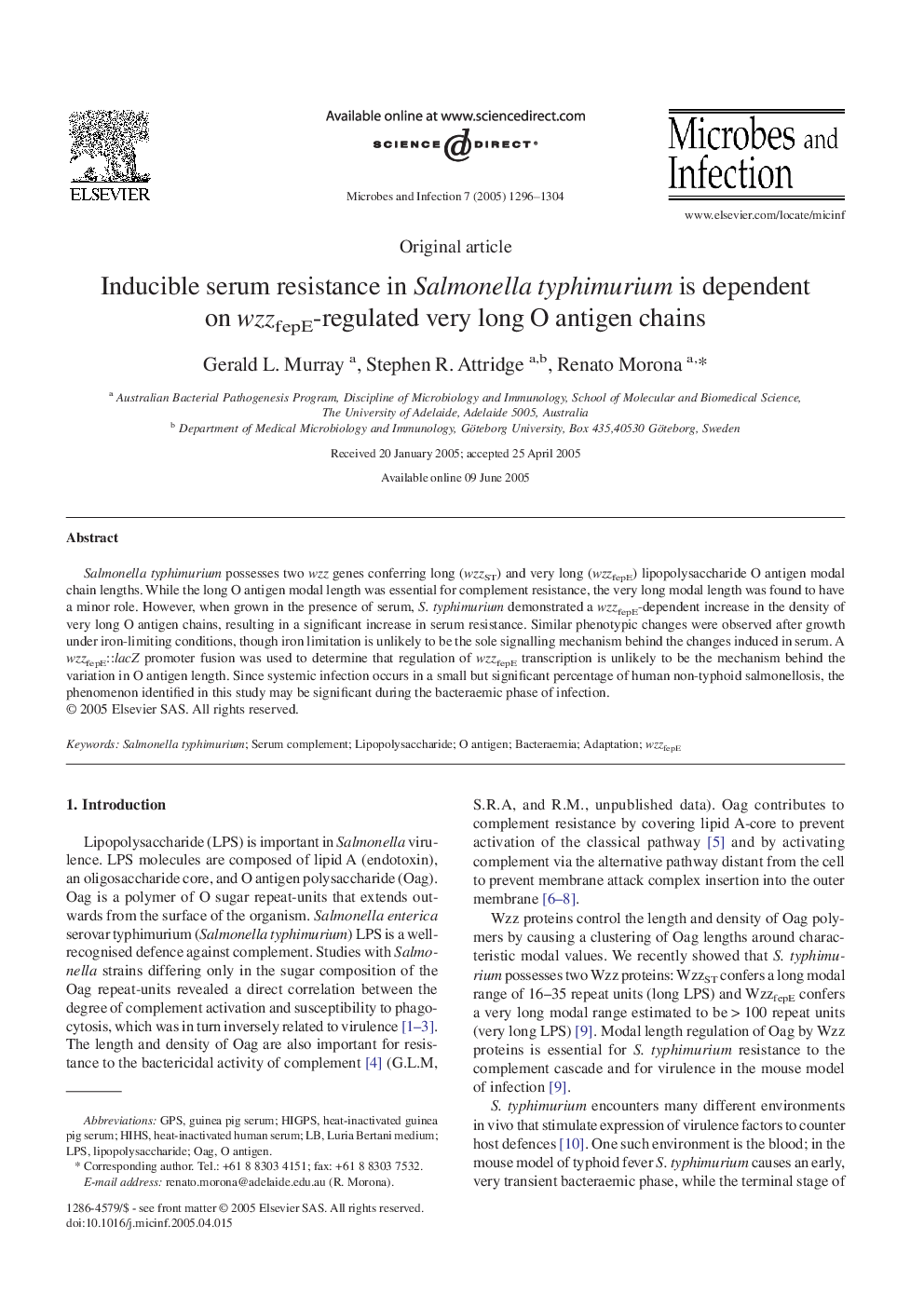| Article ID | Journal | Published Year | Pages | File Type |
|---|---|---|---|---|
| 9282921 | Microbes and Infection | 2005 | 9 Pages |
Abstract
Salmonella typhimurium possesses two wzz genes conferring long (wzzST) and very long (wzzfepE) lipopolysaccharide O antigen modal chain lengths. While the long O antigen modal length was essential for complement resistance, the very long modal length was found to have a minor role. However, when grown in the presence of serum, S. typhimurium demonstrated a wzzfepE-dependent increase in the density of very long O antigen chains, resulting in a significant increase in serum resistance. Similar phenotypic changes were observed after growth under iron-limiting conditions, though iron limitation is unlikely to be the sole signalling mechanism behind the changes induced in serum. A wzzfepE::lacZ promoter fusion was used to determine that regulation of wzzfepE transcription is unlikely to be the mechanism behind the variation in O antigen length. Since systemic infection occurs in a small but significant percentage of human non-typhoid salmonellosis, the phenomenon identified in this study may be significant during the bacteraemic phase of infection.
Keywords
Related Topics
Life Sciences
Immunology and Microbiology
Immunology
Authors
Gerald L. Murray, Stephen R. Attridge, Renato Morona,
